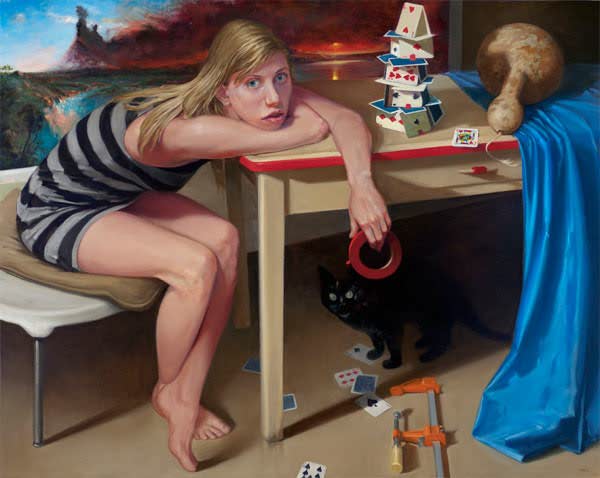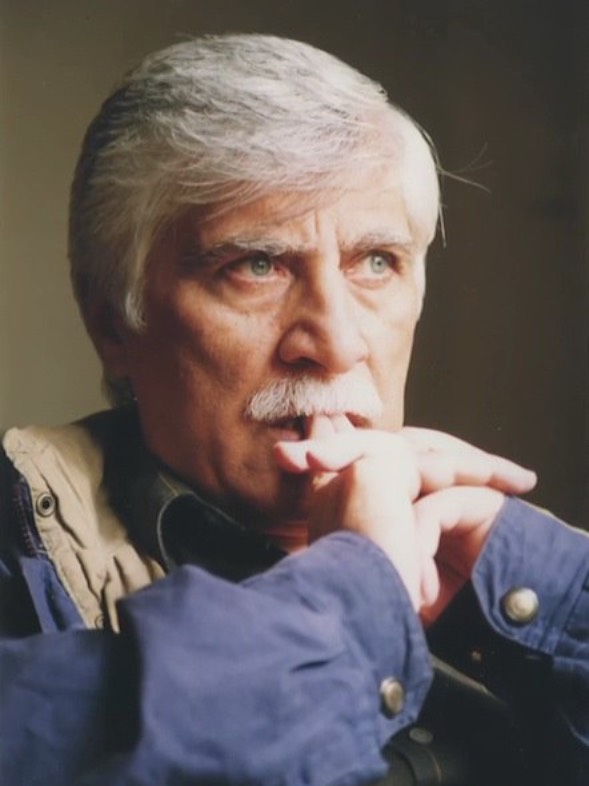It’s something that has crossed all of our minds when we come up with a new idea, sometimes even stopping us dead in our tracks. It’s that little voice, saying, “It has already been done.” Upon hearing this voice, I go from the natural high of excitement at the possibilities of a project to a sudden lull, and then quickly I decide if it’s worth doing again, my way. It usually is.
This internal battle is just part of a being a creative person. It comes with the territory, just like the necessity for practicing our craft and studying techniques, and even having at least a basic understanding of art business. And the concept of creating original art goes beyond just coming up with an idea–is it technically considered original if an instructor helped you with it, for example? In The Artist’s Magazine (November 2014), Sheldon Tapley addresses important questions that student artists in particular encounter, including the idea of creating original art in a classroom setting and understanding the variety of art programs available.
I’ve featured his Q&As below. Keep in mind that we have additional resources for art business, painting techniques, and drawing lessons at North Light Shop. And here’s a little secret–if you order anything today, you’ll also receive a free download of Strokes of Genius 4: The Best of Drawing, which retails for $35.
Solitaire (2013; oil on canvas, 36×45) by Sheldon Tapley (PIN this article)
Undergraduate Art Programs
Q. I want to study art on a college level, but I’m confused about the different art programs and degrees available. Can you help me sort them out?
A. The bachelor of fine arts (BFA) degree focuses primarily on studio education. The bachelor of arts (BA) degree, offered at liberal arts institutions, requires fewer credit hours in studio courses, allowing more time for study in other disciplines, even a second major that could be outside the arts. Private art schools, like the School of the Art Institute of Chicago (SAIC) and Rhode Island School of Design (RISD), offer BFA degrees. Four-year liberal arts institutions, like Centre College or Stanford University, offer the BA degree. Large state universities usually offer both degrees. Unlike SAIC or RISD, large universities may not allow first-year admissions directly into a BFA-degree program. Instead, these schools may place all first-year students in the BA program and, after the first year, students would compete, through an internal application process, to get into the BFA program. Thus, those universities may not require a portfolio when students apply for admission. Liberal arts institutions don’t usually require a portfolio but may suggest that applicants include one as a supplement to their applications.
An Art Business Question: What is Original Art?
Q. If a student creates a painting in a workshop or classroom, with instruction from a professional artist in draftsmanship, composition or color mixing, is the painting considered the student’s work? Could it, for example, be entered into a fine art competition?
Clementines (2013; oil on canvas, 12×16) by Sheldon Tapley (www.sheldontapley.com)
A. Art competitions want original work. The eligibility rules in the prospectus will tell you whether your planned submission meets the requirements. Often you’ll see a statement like this: “Work of students eligible only if executed without the help of the instructor.” That clarifies the term “original.” If you took a workshop or class introducing you to a new medium, with detailed instruction in technique, the work made there is ineligible. You should probably also avoid entering a competition with works made in a workshop or class that further developed your skills in making stronger compositions, using a new palette, drawing the figure or painting outdoors, for example.
Some cases require your honest judgment. For instance, once you’ve amassed significant experience, you might participate in a class or workshop in which the instructor isn’t giving detailed guidance or correcting your work in progress. Usually, the instruction is identified as “advanced,” and it’s sometimes identified as a “master class.” In a university, high-level classes or classes taken for credit to make art for exhibition fall into this category. A work made in such a class may be created with great independence; you might receive critiques on substantially finished works but not detailed instruction on works in progress. Would such works be original? You’d have to decide.
Be conservative. If you have doubts, don’t call your piece original. Do another work on your own. Apply what you’ve learned, but do so independently, from scratch. Remember, too, that if you closely imitate another artist’s work or style, you should identify that work or artist in the title of your piece. Absorbing the influence of artists you admire is useful, but producing a near copy of an artist’s work or style is an exercise, not the creation of original art. ~Sheldon
Excellent advice! Discover more about art business at North Light Shop, including books like The Successful Artist’s Career Guide and the 2016 Artist’s and Graphic Designer’s Market. Remember, order anything today at North Light Shop, and you’ll score a free download of Strokes of Genius 4: The Best of Drawing.
And regarding making art that “has already been done” as I mentioned above, just go ahead and make it for yourself and put your unique, personal spin on it. You deserve to express your visions, despite that annoying little voice we all hear, and no one can do it quite like you.
Stay creative,
Cherie
get more issue like this on artists network






